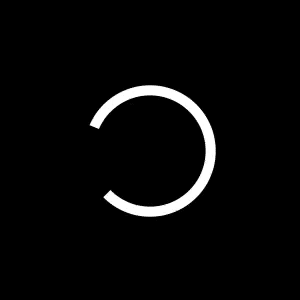

| Revision for Spirograph Nebula | ||
| Previous Revision, by PhoenixBlue [2023-06-28 01:51:10] | → | Selected revision, by CMDR Marx [2023-06-28 16:40:45] |
| DISCOVERER | ||
| Pliers | → | Pliers |
| NAME | ||
| Spirograph Nebula | → | Spirograph Nebula |
| SYSTEMNAME | ||
| BD-12 1172 | → | BD-12 1172 |
| CATEGORY | ||
| Nebulae | → | Nebulae |
| CATEGORY 2 | ||
| Notable Stellar Phenomena | → | Notable Stellar Phenomena |
| REGION | ||
| Inner Orion Spur | → | Inner Orion Spur |
| LATITUDE | ||
| → | ||
| LONGITUDE | ||
| → | ||
| CALLSIGN | ||
| → | ||
| SUMMARY | ||
| The Spirograph Nebula is a stellar remnant roughly 1,100 light-years from Sol in the direction of Barnard's Loop and the Orion Nebula. The nebula has strong cyan-green colors. | → | The Spirograph Nebula is a stellar remnant roughly 1,100 light-years from Sol in the direction of Barnard's Loop and the Orion Nebula. The nebula has strong cyan-green colors. |
| DESCRIPTION | ||
| → | ||
The Spirograph Nebula (IC 418) at BD-12 1172 is a minor planetary nebula 1,100 light-years from Sol in the direction of Barnard's Loop and the Orion Nebula. Only a few million years ago, the central star in BD-12 1172 (also known as HD 35914) was probably a common red giant star. Since running out of nuclear fuel, though, the outer envelope has expanded outward, leaving a hot remnant core destined to become a white dwarf. The nebula has strong green colors, which combine with the blue-white of the O-class primary to create stunning visuals on several rocky planets. Navigating to the Spirograph Nebula can be complicated due to the permit-locked Col 70 Sector. To route around Col 70, travelers should plot a course for Shenve in the Witch Head Nebula, and from there plot a course to BD-12 1172. Both Planet 2 and Planet 10 hold Notable Stellar Phenomena (NSPs) in the rings. Planet 2's metal-rich ring contains a high level of dust particles, allowing the crystalline structures inside the ring to create crepuscular rays when silhouetted against the primary star.
Viride Gourd Molluscs cohabit the NSPs, though their small size requires pilots to track down their flickering radar tracks. The Molluscs interact with ship headlights, sometimes engaging in behavior that resembles a game of tag.
Explorers can also find lattice mineral spheres at the NSPs in Planet 10's ring, along with Rubeum Metallic Crystals.
Prasinium Bioluminescent Anemones inhabit several bodies in the system, including Planet 2 and Planet 10 a.
Pilots attempting to land on Planet 2 should be advised to fly cautiously, as the planet's gravity is 1.75 times Earth-normal. However, pilots who make the landing will be treated to spectacular views of the ring against the blue-green sky of the Spirograph.
| → | The Spirograph Nebula (IC 418) at BD-12 1172 is a planetary nebula 1,100 light-years from Sol in the direction of Barnard's Loop and the Orion Nebula. Only a few million years ago, the central star BD-12 1172 (also known as HD 35914) was probably a common red giant star. After running out of hydrogen, the outer envelope has expanded rapidly, leaving behind a hot remnant core destined to become a white dwarf. The nebula has strong green colors, which combine with the blue-white of the O-class primary star to create stunning visuals on several rocky planets. Navigating to the Spirograph nebula can be complicated due to the permit-locked Col 70 Sector. An easy way to route around Col 70 is to plot a course for Shenve in the Witch Head Nebula, and from there plot again to BD-12 1172. Both the second and the tenth planets hold Notable Stellar Phenomena (NSPs) in their rings. The former's metal-rich rings contain a high level of dust particles, allowing the crystalline structures inside to create crepuscular rays when silhouetted against the primary star.
Viride Gourd Molluscs form the NSPs, though their small size requires pilots to track down their flickering radar tracks. The molluscs react to ship headlights, sometimes engaging in behavior that resembles a game of tag.
Explorers can also find Lattice Mineral Spheres at the NSPs in the tenth planet's rings, along with Rubeum Metallic Crystals.
Prasinum Bioluminescent Anemones can be found on the surfaces of several bodies in the system, including planet 2 and the 10 a moon.
Pilots attempting to land on the second planet should be advised to fly cautiously, as the planet's gravity is 1.75 g. However, those who do make the landing safely will be treated to spectacular views of the ring against the blue-green sky inside the Spirograph nebula.
|
| JOURNAL | ||
| → | ||
| OBSERVATORY | ||
| → | ||